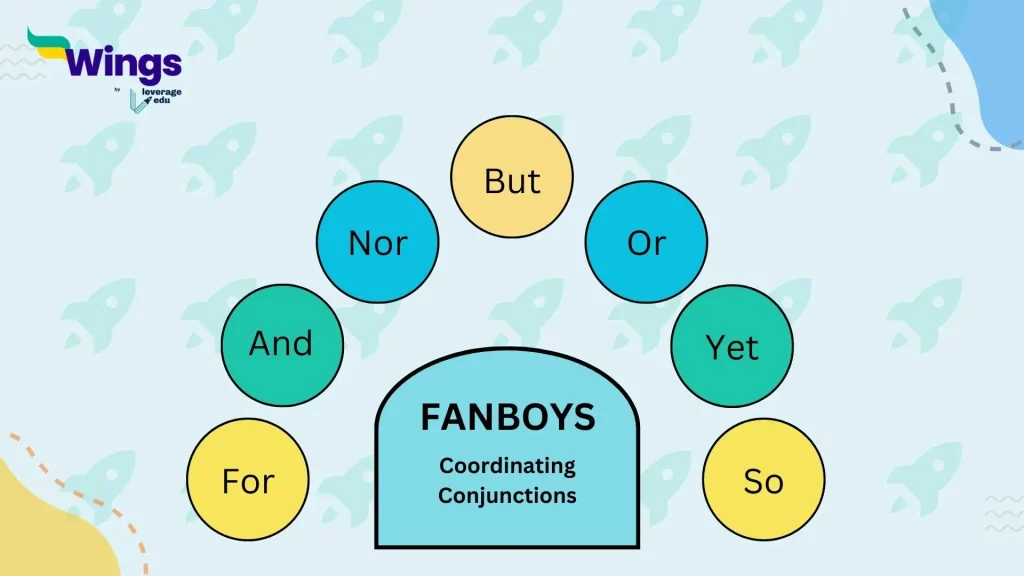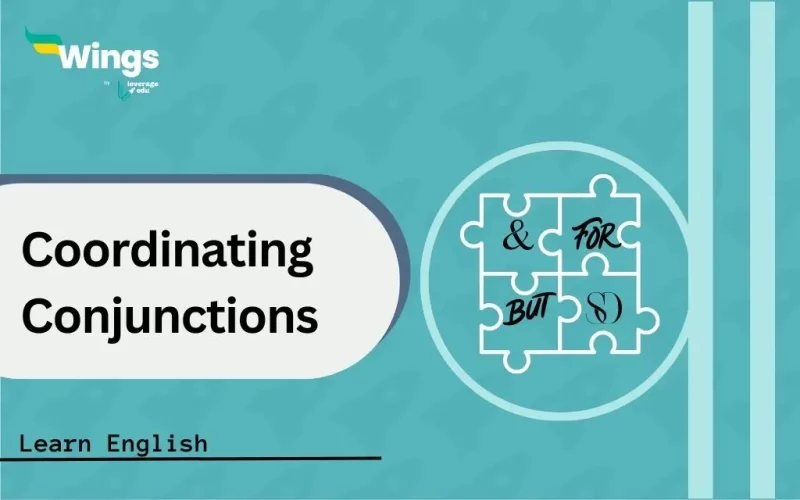Coordinating conjunctions are frequently mixed up with subordinating conjunctions. When any sentence is written, then there is a glue of conjunctions that form sentences. In this blog, we shall be talking inside-out about these connecting words within the realm of English grammar, along with everything else you should know about this grammatical tool, with the help of definitions, examples and exercises.
This Blog Includes:
What are Coordinating conjunctions?
A coordinating conjunction connects two or more clauses, words, verbs, adjectives, and nouns. These conjunctions help to join elements together to form meaningful sentences. The common coordinating words are as follows – “are,” “but,” “or,” “nor”, “so”, and “yet”. There are a few rules that are used in coordinating conjunctions correctly:
- Using the mnemonic “FANBOYS” to keep things in mind. This “FANBOYS” rule comes in very handy from students’ perspective.
F: for
A: and
N: nor
B: but
O: or
Y: yet
S: so

- Coordination conjunction always connects words, phrases, and clauses. For example, The pile of books are kept there and everyone is reading it from there.
Read More: List of Conjunctions
Types of Coordinating Conjunctions
There are four main types of coordinating conjunctions as mentioned below in the table:
| Types | Definitions |
| Cumulative Conjunction | It is used to add one sentence or phrase to another |
| Alternative Conjunction | It is used to present an alternative between two phrases or sentences. |
| Adversative Conjunction | It expresses opposition or contrast between two sentences or phrases. |
| Illatives Conjunction | It refers to inferred or concluded from another statement. |
Coordinating conjunctions Rules
Many instructors have been told never to start any sentences by coordinating conjunctions. It is totally incorrect. Learners should take note of that while learning. This rule will help to write fragments rather than complete sentences.
- Make sure that they are immediately followed by a main clause.
- Never use them to start a sentence all on your own. Use only when you have a fluent writing style.
- Commas should not come after these conjunctions used to open sentences unless the interrupter comes right after.
Usage of Coordinating Conjunctions
- Joining Independent clauses: One of the essential functions of this conjunction is two independent clauses that stand together to form a complete or meaningful sentence. Examples: He loves to read, but she prefers listening to music.
- Connecting Words or Phrases: It can also be used individually or in short phases within a sentence. Let’s suppose: He enjoys both tea and coffee.
- Combining Items in a List: When forming a list, coordinating conjunctions helps in maintaining a parallel structure by connecting words or phrases of the same grammatical form. For example: We visited France, Italy, and Spain.
Coordinating Conjunctions Practise Exercise
Use the appropriate conjunctions and prepositions in the following sentences.
- He enjoys running, he also likes to walk.
- She wants to travel the world. He doesn’t have enough savings.
- She likes to read, she is already occupied with studying.
- They went to the beach. They swam in the ocean.
- Aryan loves to play basketball. He dislikes cricket.
- We can eat parathas. We can have Italian.
- She’s not feeling. She still wants to go to her office party.
- He wants to buy a car. He doesn’t have his savings.
- She finished her homework. She played video games.
- The cafe serves Italian food. It also offers Indian food.
Answers
- And
- But
- And
- And
- But
- Or
- Yet
- But
- And
- And
FAQs
There is one tick by which you can learn the coordination conjunctions that is: “for,” “and,” “yet,” “or,” and “so.”
Coordinating conjunction means to connect two or more clauses, words, verbs, adjectives, and nouns. Examples: “and”, “but”, “or”, “nor”, and “so”.
Yes, besides coordinating conjunctions, there are also subordinate conjunctions and corrective conjunctions, each conjunction plays a different role in connecting parts of sentences.
Find more exciting grammatical reads below!
| Subordinating Conjunctions | 75+ Cool Two-Letter Words |
| Parts of Speech | Types of Reported Speech |
| 9 Basic Rules in Grammar | Editing Exercises and Worksheets |
This was all about Coordinating Conjunctions and usage in English grammar. Hope you understand the concept and know how to proceed. You can also follow Leverage Edu for more exciting and informative blogs.
 One app for all your study abroad needs
One app for all your study abroad needs














 45,000+ students realised their study abroad dream with us. Take the first step today.
45,000+ students realised their study abroad dream with us. Take the first step today.
